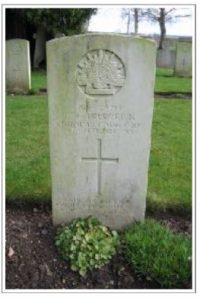5th Training Squadron, Australian Flying Corps

Charles Clarence Frederick was born in Spokane, Washington , USA on 7 February 1896 and was an American citizen at the time of enlistment.
Prior to enlistment Charles was working as a mechanic in Leongatha, Victoria, Australia.
He enlisted at Melbourne on 11 February 1918, having just reached 22 years of age and was placed into the Special Draft No 3 for the Australian Flying Corps (AFC), with the rank of Air Mechanic Second Class.
He left Melbourne aboard the HMAT Nestor on 28 February 1918 arriving at Liverpool on 20 April and immediately travelled to the AFC Depot at Halton Camp, Wendover, Buckinghamshire.
On 5 July he was sent for training at the No 2 School of Aeronautics, Oxford, with a view to becoming a Flying Officer (Pilot) and was appointed as a Cadet.
A posting to No 5 Training Squadron at Minchinhampton Aerodrome (latterly known as Aston Down) came on 25 September. He then undertook flying training, which, up to 4 February 1919, had included almost three hours solo in a Sopwith Camel.
On that day he took off at about 10.20am, in fair weather, with good visibility, flying a Camel which had passed all pre -flight airworthiness checks.
At about 11.15am an eyewitness saw the aircraft go into a spin at a height of about 2,000 feet, whilst flying over the Sapperton area. After falling for about 500 feet it pulled out of the spin into a controlled dive before very quickly being pulled out of the dive. When this happened, the right wing crumpled up and the aircraft dived into an arable field at Rodmarton. Cadet Fredericks was almost certainly killed on impact and was discovered in the wreckage with two fractured legs and bruising to the face. He was three days short of his 23rd birthday.
A Court of Inquiry was held later that day and heard from a number of witnesses. The conclusion was that in coming out of the dive excessive strain had suddenly been put on the wings which caused the right side flying wires to break, causing the aircraft to crash. An inquest confirmed the findings of the Court of Inquiry and concluded that the accident was the result of pilot error.
Cadet Charles Clarence Frederick was buried with military honours in Leighterton Church Cemetery on 8 February. His grave is now marked by a CWGC headstone.
